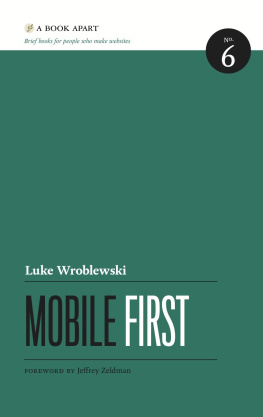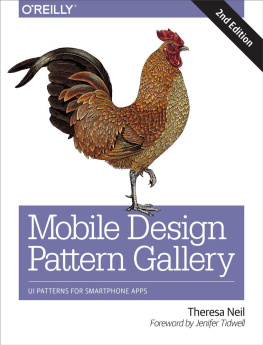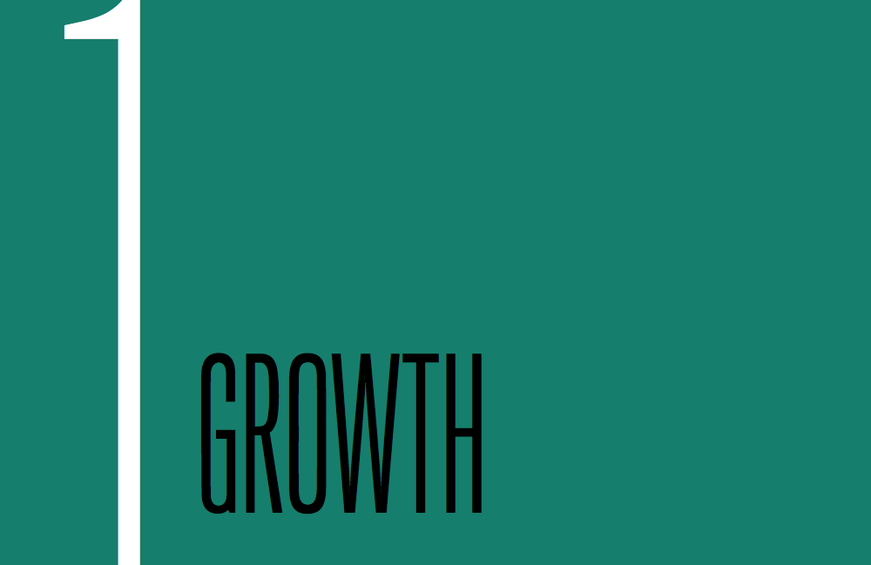Foreword
Luke Wroblewski is a data guy, so lets check the stats. He has personally written 1,372 articles, given 190 presentations, and authored three books on mobile and web usability, interaction, and design, his latest and (I think) most important being the one you now hold in your hands. If that kind of output leaves you unimpressed, consider that Luke did all this writng in his free time, while employed as digital product design lead for some of the biggest companies on the internetand occasionally at his own startups.
This highly accomplished, green-shirted, plain-spoken designer has spent the past several years focusing intensely on the mobile experience. That is lucky for him, as mobile is where the whole web and world are going in a headlong rush. Its even luckier for you and me, because Luke not only knows mobile inside-out and backwards, hes also a brilliant designer who puts the user first. Plus hes a heck of a great communicator. Luke writes from a foundation of 16 years of thought leadership and digital product design executionnot to mention the absorption of thousands of white papers, internal reports, articles, books, and lectures. And he has poured what he knows into every page of Mobile First.
Reading this book is not only fun, its painlessly but profoundly educational. Lukes call to action is changing the way my company and I approach the design of websites, and it will change the way you do, too. Mobile First is packed with the best kind of persuasionpersuasion from data, letting the facts shriek for themselves. And it offers the best kind of advice: practical, immediate, user-focused, big-picture stuff that sweats every detail and respects your IQ and your experience as a practitioner.
I love this book. Im thrilled that we were lucky enough to publish it. I hope it ends up on every designer, front-end developer, and UX persons bookshelf. I want to see our industry embrace the mobile experience in a way that helps our users and us not merely succeed online but thrive. If enough of us follow the precepts of this little book, I am confident about the future of the web.
Jeffrey Zeldman
Copyright 2011 Luke Wroblewski
All rights reserved
Publisher: Jeffrey Zeldman
Designer: Jason Santa Maria
Editor: Mandy Brown
Copyeditor: Krista Stevens
Compositor: Rob Weychert
ISBN 978-1-937557-03-4
A Book Apart
New York, New York
http://abookapart.com
Part 1
Why Mobile First?
Heres the elevator pitch: designing for mobile first not only prepares you for the explosive growth and new opportunities on the mobile internet, it forces you to focus and enables you to innovate in ways you previously couldnt. Of course theres a lot of detail behind that statement, which is what this part is all about.
Part 2
How to Go Mobile
Its clear that mobile is an exciting new opportunity for many of us. But if youre coming from a desktop web design background, how do you make the transition to designing mobile web experiences? While a lot of your existing tools, experiences, and skills will still apply, youll probably want to start thinking a bit differently about organization, actions, inputs, and layout on mobile.
In the next part, were going to dispense with introducing the basic concepts behind web design and just highlight where and why designing for mobile is different. So you can take what you already know and get going.
Introduction
This book is really just a small, simple idea. But like many other simple ideas before it, this idea has deep and far-reaching implications. It changes how we define the personal computer and how we use the web. While thats a very big deal, it can be boiled down to how we get started.
Mobile first
For years, most web teams have designed products and information for desktop and laptop computers. For these teams, mobile was an afterthought if even a thought at all. Sadly, this approach actually made sense in many parts of the world for quite a while. Browsing the web on mobile phones was painful; carriers controlled access to the web on their devices; and mobile network speeds often made everything grind to a halt. Very few people used the web on mobiles (unless they were in Japan), and those that did were usually faced with an unpleasant experience.
But things have changed so dramatically over the past few years that starting with the desktop may be an increasingly backward way of thinking about a web product. Designing for mobile first now can not only open up new opportunities for growth, it can lead to a better overall user experience for a website or application.
Which brings us to our small idea. Websites and applications should be designed and built for mobile first . Going mobile first:
- Prepares you for the explosive growth and new opportunities emerging on mobile today,
- Forces you to focus and prioritize your products by embracing the constraints inherent in mobile design, and
- Allows you to deliver innovative experiences by building on new capabilities native to mobile devices and modes of use.
In fact, theres enough benefit to a mobile first design approach that its worth thinking about even if you dont have immediate plans to ship a mobile experience. Just a half-day of brainstorming about your mobile experience can open up new ways of thinking about your product.
But dont just take my word for it. Some of the biggest web companies in the world are adopting a mobile first design philosophy as well. Google Chairman Eric Schmidt advises: The simple guideline is whatever you are doingdo mobile first, (http://bkaprt.com/mf/1). Kate Aronowitz, Facebooks Director of Design, says Were just now starting to get into mobile first and then web second for a lot of our products. What were finding is that the designers on mobile are really embracing the constraints [and] that its actually teaching us a lot about how to design back to the desktop, (http://bkaprt.com/mf/2). And Kevin Lynch, Adobes CTO, states: We really need to shift to think about mobile first....This is a bigger shift than we saw with the personal computing revolution, (http://bkaprt.com/mf/3).
For these organizations and many others like them, mobile first is a big deal. But why is mobile so important and how can you get started designing for it? Well, thats why youre holding a whole book about this small idea in your hands.
About this book
Your time is precious so this book is short and to the point. The first section outlines why a mobile first approach for websites and applications makes sense now. The second section details how designing mobile web experiences is different (from designing desktop web experiences) so you can take what you know about designing for the web and get started on mobile today.
You wont find any code in this book; there are many programmers out there who can provide better advice on mobile development than I can. What you will find is a business case for mobile first and many design patterns and best practices that you can continue coming back to as you design and develop mobile web experiences.
Its also worth pointing out up front that Im going to use the term mobile web experience instead of mobile web or mobile website throughout this book. Fundamentally, theres just one World Wide Web, but it can be experienced in different ways on different devices. Were focusing on the mobile experience in these pages.
Now I promised conciseness, so lets dispense with the introductions and dive into how going small first can ultimately help you go very, very big.










